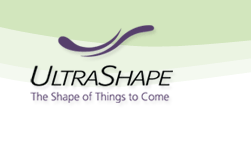

Botox: Seeing Straight
If both eyes do not point
in the same direction, you're probably squint. Inward-turning eyes, called
a convergent squint or "cross eyes", usually occur in young children.
A divergent squint, when the eyes turn outwards is less common. Although
not necessarily painful, a squint can be a distressing condition. Many adults
are concerned about their cosmetic appearance, and nearly four in every
100 adults suffer from some form of squint. They may wish to correct this
from a cosmetic angle, but there is also the physical disability that often
accompanies this condition; loss of eye-hand coordination; bumping into
things when ascending, or descending stairs or kerbs; crossing the street,
driving, and playing sports.
Many adults who
suffer from squint problems
are not aware that help is at hand. The good news is that adults need not
suffer. Recently there has been an increase in effective, available treatment.
The principal
treatments used are Botulinum Toxin and/or
eye muscle surgery. Botox has become 'the injection du jour'
as more and more people follow in the footsteps of celebrities to smooth
out their wrinkles. However, few people realize that the medical use of
Botox was originally for the treatment of eyes that were squint. Today,
a simple injection can rectify many unsightly turns of the eyes. This is
an outpatient procedure that requires only a few drops of anaesthesia, and
takes about 30 seconds. "Botox treatment has made a real difference
for many patients. Not only does it help to realign the eyes, it can increase
confidence and social skills. It's not just a cosmetic thing, it can affect
your job prospects," says Mr Christopher Bentley, a consultant ophthalmologist.
But is
Botox safe? According to the surgeons who carry out these
'squint' treatments, Botox has become the treatment of choice for muscular
spasms affecting the face; and repeated studies have demonstrated that it
is effective and safe. The target muscle is injected with a very fine needle.
Benefits begin in one to 14 days after the treatment, and can last on average
about three to four months, after which you can go for a top up. All effects
of the toxin ultimately reverse with time. A range of studies have confirmed
the side effects to be minor
in the vast majority of applications, and they are definitely dose related.
The Botulinum Toxin administered in the case of squint treatments is heavily
diluted. Some of the reported side effects have included flu-like symptoms,
pain at the site of injection, headaches, and muscle weakness, but these
are usually mild and transient. In addition, adjustable stitches are used
for squint surgery in adults. The operation is usually done under general
anaesthesia and some stitches are not permanently tied. If the squint is
still present after surgery, local anaesthetic drops are given and the stitches
adjusted until the eyes are in the correct position. "This is a relatively
new development and a really helpful tool to help the surgeon to fine tune
surgery," says Bentley.
The type and amount
of surgery to perform for a particular squint demands an accurate preoperative
decision and necessitates meticulous surgical planning and accurate prediction
of surgical outcome. "The surgical aims are realignment of the eye
muscles where necessary to achieve satisfactory function and appearance,"
says Bentley.
by Bronwen E. Roberts
HOME
| CONTACT US | SITEMAP
| PRIVACY POLICY
